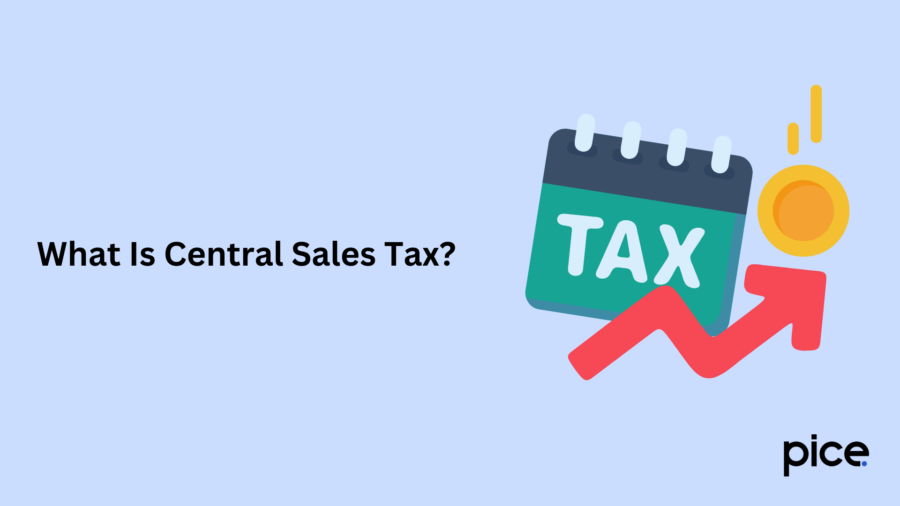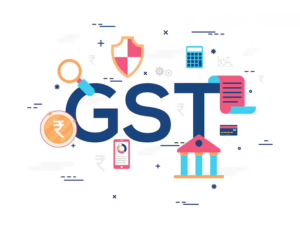Central Sales Tax (CST): Objectives of CST Act 1956
- 2 Dec 24
- 7 mins

Central Sales Tax (CST): Objectives of CST Act 1956
- What Is Central Sales Tax?
- Central State Tax in India
- Central Sales Tax Act, 1956
- Objectives of Central Sales Tax Act, 1956
- Central Sales Tax Rate
- Central State Tax Rules
- How To Get Central Sales Tax Registration?
- Impact of CST on Businesses and Consumers
- Understanding The Transition from CST to GST
- Conclusion
Key Takeaways
- CST's Role: CST governed inter-state trade and tax compliance before GST.
- Tax Framework: It was an indirect tax under the CST Act, 1956, levied on inter-state sales.
- Economic Impact: CST affected business costs and increased consumer prices.
- Transition to GST: GST replaced CST, simplifying taxes and boosting inter-state trade.
- Unified System: GST created a cohesive tax framework, promoting ease of business.
The Central Sales Tax (CST) was a vital tax mechanism in India before the implementation of the Goods and Services Tax (GST). Governed by the Central Sales Tax Act, of 1956, CST was levied on the sale of commodities across state boundaries. Understanding CST is crucial for understanding how India and its tax structure evolved, as it played a pivotal role in regulating interstate trade before being replaced by GST.
In this blog, we will discuss the objectives of CST before GST implementation and its effect on businesses and consumers.
What Is Central Sales Tax?

When a businessman sells certain goods to another state, the goods are subjected to a tax known as the Central Sales Tax. It is an indirect tax in GST that is to be paid in the state where the goods are being sold. This tax is only levied upon inter-state transactions. If the goods are exported within the same state, they are not subject to CST.
Central State Tax in India
Central Sales Tax, CST in GST was introduced in India to eradicate the chances of any discrepancy in cases of inter-trade sales. In the year 1956, the Parliament passed an Act to introduce the Central Sales Tax.
The primary reason was to monitor goods sales and their tax. Therefore, CST comes under the bracket of the Union List of Seventh Schedule. Despite being levied by the Central Government, the government of the state of transaction administers the entire sales process.
Thus, in cases of lawful inter-state trade, the trader needs to pay both central sales tax and state sales tax.
Central Sales Tax Act, 1956
The Central Sales Tax Act of 1956 lays down the fundamental regulations concerning sales taxation in India. Introduced in the Sixth Constitutional Amendment, this Act has been effective since 1957. It serves as the basic framework of Central Sales Tax in India, bringing inter-state trade transactions under legislative jurisdiction. The Act clearly states the penalties involved, trade restrictions on interstate sales and goods important for inter-state trade.
Objectives of Central Sales Tax Act, 1956
Here are the primary objectives for introducing Central Sales Tax, in 1956:
- Simplify the taxation process when it comes to inter-state trading. From levying to collection to distribution of taxes, the CST Act aims to reduce confusion regarding sales tax.
- Frame tax transaction policies to ensure that the government regularly monitors the occurrence of sales and interstate purchases of goods, concerning interstate commerce
- Categories and classify goods according to their importance in trade and commerce
- Establish an official authoritative body that settles interstate trade disputes
Central Sales Tax Rate
Since the implementation of CST, the rate of tax has kept changing from time to time. Initially, it was 1%, which eventually rose to 2%. From July 1975 onwards, the tax rate further rose to 4%.
CST Act exempts all goods of the tax which are important to be transported from one state to another. The Act consists of provisions for essential commodities so that they remain non-taxable, taking public welfare into account.
In 2007, the Central Sales Tax rate came down to 3% from the previous rate of 4%. Further in June 2008, the tax rate saw a decline to 2%. This reduction in CST rate was accepted because of the need to introduce GST (Goods and Services Tax).
The Central Sales Tax rate applicable for different situations is shown in the following table:
| Local Tax Rate | Central Sales Tax Rate |
| Goods exempt from local tax | Nil |
| 1% | 1% |
| 2% | 2% |
| More than 2% | 2% (Form C is a requisite) |
Central State Tax Rules
When a trader is dealing in goods that involve inter-state trade transactions, he must abide by certain rules, such as:
- A dealer should apply (via Form A) to register under Section 7 of the CST Act. The application must have the signature of the proprietor and be verified by a competent authority.
- Even if the trader had businesses in more than one state, only one application will be taken into consideration.
- The registration certificate must be present at the principal place of business. At the other business locations, you can keep a copy of the certificate.
- If the registration certificate is lost, the applicant has to make a payment in the form of court fee stamps for a fresh copy.
How To Get Central Sales Tax Registration?

The first step towards registering for Central Sales Tax is keeping your TIN registration number handy. After filling in the Taxpayer Identification Number, you need to complete the necessary documentation. Once you are through with the documentation process, the individual can pay the registration fees.
You need the following documents to get central sales registration :
- Government-approved proof of ID
- Address proof of business location
- PAN card
- Address proof
- Photographs
- Bank statement
- Purchase invoice
- Security/Reference
Impact of CST on Businesses and Consumers
The Central Sales Tax (CST) significantly affects both businesses and consumers in today's economic landscape. For businesses, CST impacts cost structures, influencing product pricing and overall profitability. Companies involved in inter-state trade must consider CST rates when setting prices. This impacts business strategies, supply chains and distribution efficiency, affecting competitiveness.
For consumers, CST directly increases the sale price of goods, impacting purchasing decisions and spending patterns.
Understanding The Transition from CST to GST
India’s transition from the Central Sales Tax (CST) to the Goods and Services Tax (GST) marks a transformative shift. GST subsumes all the existing indirect taxes under a single head with an efficient framework.
The uniform tax structure simplifies compliance, eliminates cascading taxes and helps to achieve the government's aim of 'One Nation, One Tax.' This shift fosters a business-friendly environment, encouraging smoother inter-state trade operations.
Conclusion
The transition from CST to the Goods and Services Tax (GST) addressed several issues by simplifying taxation. The implementation of CST before GST remains significant, but its replacement by GST created a more cohesive, transparent, and business-friendly environment, aligning India's tax structure with global standards.
💡If you want to streamline your payment and make GST payments, consider using the PICE App. Explore the PICE App today and take your business to new heights
 By
By 
















